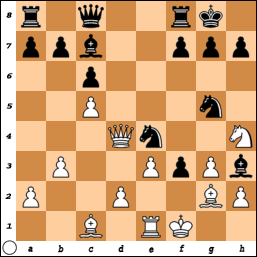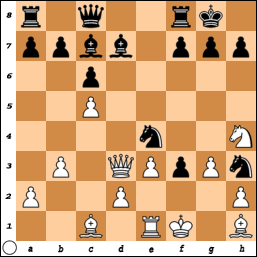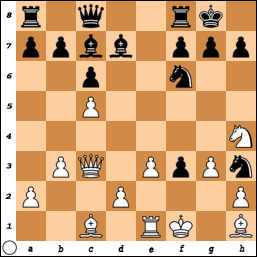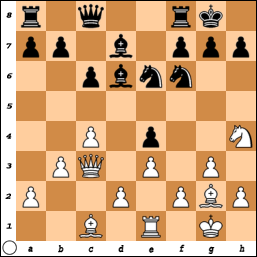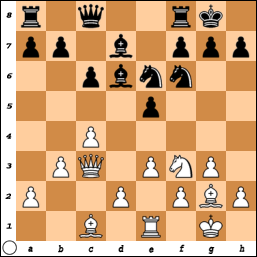-
Every Act is a Selfish ActI answered it here:
That makes selflessness theoretically (of course, practically) unattainable. — Copernicus
So, your OP, if simplified in one sentence would be: "Most people are selfish."
It's very well-written, I'll admit. With the right fine-tuning and your own personal chaperoning and stewardship can turn into something readable and thought-provoking. I feel you've yet to take that step, however. Pardon me for saying. -
Every Act is a Selfish ActThe only selfless act would be when you deny yourself gratification, gain, achievement, everything. — Copernicus
Okay, see now this is a good post. That much makes sense.
However, does it not defeat the premise (or at least title) of your OP?
Out of the billions (perhaps more) persons who have lived, there is absolutely no way to know at least one person never lived a life doing exactly that. Sure, it's likely said life ended prematurely, perhaps violently, and the person died an unknown and was never heard of or spoken of. But that shouldn't matter as far as the premise of your OP is concerned. -
Banning AI AltogetherWhich is outside the scope of this discussion. — T Clark
That was a friendly interpersonal addition and remark, which should not have distracted from the main point of the post. That main point being a reminder that AI generally brings the user new knowledge as opposed to re-organizing current knowledge. Perhaps you're the outlier, and that's fine.
Edit: Yes, many people put their unbridled ideas or ramblings into AI and ask to "simplify", thus "trimming the fat", in a manner of speaking. Of course, if they were able to do this themself, they would have, so even in such manner of usage it does in fact "introduce new knowledge" at least just as much as it does "re-organize existing knowledge", one could say.
AI can be used as a tutor for learning and improvement—for things like—oh, I don’t know—chess. :razz: — praxis
Ouch. Yet a fair point nonetheless. -
Banning AI Altogetherit can be helpful personally in
gettingfundamentally alteringmywhat used to be one's thoughts altogether. — T Clark
:up:
Let's not get it twisted. Specifically why I don't read established philosophers despite knowing they were great people with great things to say who would certainly improve my own intellect and perhaps even understanding of life, existence, and everything in between, substantially.
Let's say I'm doing a "solo non-assist run" as far as the life I live goes. :grin: -
Every Act is a Selfish Actor take my children to the sea-side because their delight gives me pleasure, those is at least a candidates for a selfless action — Ludwig V
But they're still your children. It benefits your family and existence directly to have happy children who live productive lives, possibly earning lots of money, holding you in high regard, esteem, and favor, and then taking care of you when you're enfeebled.
It also makes you look good to, shoot, just about anyone and everyone.
I don't see you going around adopting random children or spending your hard earned money on other people's children.
Great post, just that one line sticks out to me as something that others might gloss over thus prematurely proving the OP's premise as valid. -
Every Act is a Selfish ActExplicit — Buying goods — Money for product
Implicit — Friendship — Companionship for loyalty
Subconscious — Charity — Relief from guilt or joy of giving
Symbolic — Heroism — Recognition, legacy, identity — Copernicus
What aboutunknownanonymous self-sacrifice? Say, jumping on a grenade thrown at your platoon? No, that's not quite the same because he would be remembered. But, say some sort of hypothetical secret act to make the world a better place, by someone without children or family, who therefore has nothing to gain from making said world a better place? :chin: -
What jazz, classical, or folk music are you listening to?
https://www.youtube.com/watch?v=jtokk3dj1Hk
Finnish web programmer friend of mine (Whom I never met, and I suppose don't really know ever existed) showed me this. Back when we were kids. Well, I was 15 or so. Think the person was 20. We both ran pretty successful sites at such a young age (nothing big or money-heavy just it's own niche community, not unlike this one..) -
Banning AI AltogetherI am not going to outline all the possible dangers of people educating themselves by undertaking a search in whatever search engine they use or YouTube or whatever. — praxis
I think his concern is, not to be that dramatic, perhaps not quite a SkyNet movie takeover scenario, which theoretically could happen. But definitely along that line of thinking. It's funny, you're good at chess but when it comes to other things, well, let's just say, your humanity shines through. :smile:
And yes, that is a formal challenge for rematch.
For example, as an actual experienced computer programmer, I know the difference between an object can ultimately befall on a simple 1 or 0. Video game programmers know this. They often joke with one another and run "real world" scenarios where they go around changing the enemy AI and friendly AI in such a quick fashion and watch the world they created turn into chaos.
This is possible in a world where military and police rely on AI drones with lethal capability. All it takes is a simple 1 turned to 0 or vice-versa. And all of a sudden, the drones sent to attack person A viewed as 'Criminal' instead view all citizens as person A's accomplice and 'Criminal'.
It's not hard to do, really.
A record number of 1862 data breaches occurred in 2021 in the US.
In an AI-centric world, that's a possible 1,862 massacres of tens, thousands, maybe millions of people if drones and bombs are in the equation, that would have occurred. Perhaps even by some little kid who got lucky.
Now, is that the future you want? Because it's what you'll get. Were it not for folk you've yet to meet or at least understand. -
Does Zizek say that sex is a bad thing?While unfamiliar with his work in particular, such a sentiment strikes me as perhaps being one of two people. A moralist (perhaps derived from religious means, or just as well, perhaps not...) or a true intellect who believes the only thing holding back humanity is itself. That is to say, certain activities and drives, particularly the strongest, and therefore most likely to result in lack of self-control and disregard for things that are important, are, quite simply, the most deadly and any person or society who wishes their greatest self to flourish would do well and be wise to acknowledge such provable observation as not only fact but perhaps its own religion in and of itself.
It's weird. When people reveal that they are unable to conceptualize basic concepts like mutual consent (which requires quite distinct control for both parties) we maybe should take their opinions on consent-derived activities as less important. — AmadeusD
Obligatory "yeah, well, he's famous and you're not, so..." :razz: -
Do you think AI is going to be our downfall?Studies have found that people who use AI have lower cognitive ability than people who don't, you're making yourself worse off for using it. — Darkneos
Well, the first part may be true, but that was probably a personal issue that would have been measured the same, regardless of whether AI ever existed or not. :smirk:
Still, you may be right. If you don't "use it", you "lose it", or so the saying goes.
https://science.howstuffworks.com/life/evolution/10-physical-human-traits-that-evolution-has-made-obsolete.htm -
Friendly Game of Chess
Okay, now I can see that. Well, shoot. I'd fancy another game. But I'm sure you'd prefer someone a bit more on your level to play with. Perhaps @Jamal or @Hanover, or better yet @Count Timothy von Icarus or @Banno could give you a run for your money. They're rather smart cookies, to put it mildly.
It'd certainly be interesting to observe, I'm sure all would agree. One can only assume such brilliant minds have made it so as to have relatively relaxed schedules. Based on what? I'm not entirely sure. Otherwise, I'd enjoy playing again in a few days or so. After I recover from ego death, of course. It's a long process, of which acceptance is the first step. I'll take it when ready. Note the copular ellipsis as opposed to having said "I'll take it when I am ready." I learned that here, by the way. :smile: -
Friendly Game of ChessNot placing your queen side bishop in kill position. — praxis
Bit confused here.
From the first image, if I moved f6 (queen) to c3 (knight) (the furthest possible move) and took the piece on c3, b2 (pawn) would have taken the queen. Of course I could follow up with g7 (bishop) to c3 (pawn) but that would only result in having a bishop (who can only move diagonally) in front of the king at b2. Which is basically useless since you would simply capture it the next turn per common sense.
It's fine, you don't have to answer. I'll figure it out, at my own pace, assuredly. Or, you can be a good sport about it. :grin:
I don't see how the second image is possible from the first. -
Friendly Game of ChessCheckmate. Thanks for the game! — praxis
I still think if it really came down to it my king would be able to take your queen if she got close enough but, fair enough. Let us respect the rules that respect us.
Also, if you'd like, at what point (or post, if you could link to it) did I make the "fatal" move? I'm assuming it's just before Hanover called it as such. -
Friendly Game of Chess
I am seeing my instantiated life (starting from the moment the game was initiated) flash before my eyes. Come to think of it, I won't be missing very much.

Your move. -
Friendly Game of ChessThe end is nigh. :fear: — BitconnectCarlos
...until he realizes I was actually playing under a special set of rules originating from the Orthodox Buddhist monks of Tibet that permits me one move the average chess so-called guru is unaware of. This "ruleset" is generally heavily suppressed by the government thus explaining how I'm the only one here who knows about it.
Meanwhile, his ignorance or political stance to not recognize such a State (and as a result their customs) as valid is his own personal folly and has nothing to do with me nor this game.
Come on now, all I need is one person to say they know what I'm talking about and we can turn this around, lickety-split. :grin: -
Who is the Legitimate Author of the Constitution?what is achieved. — Ciceronianus
We are blind in this world. We have senses, such as they are. But they are nothing suitable to understand the vastness of the universe. We poke and prod into the abyss, finding so-called "answers", at least things that satisfy our most primal senses, food, comfort, safety, entertainment, things a chipmunk also seeks and finds to satisfaction. But what of it?
Even if we merely play games, then at least there's a winner and loser. — Ciceronianus
The things people living an unexamined life consider the most important are actually the silliest and trivial of games, the least important of anything a man can do or ever hope to accomplish. In these falsehoods, so-called winners "lose" all opportunity of bettering one's self and learning from others who managed to make it as far as they have, while so-called losers "win" the unquenchable fire of a forced life of eternal betterment. Upon realizing such, we realize such childish mindsets produce no winners, but simple degrees of self-denial in all who embrace them.
Can you not see that? What madness is this? -
First vs Third person: Where's the mystery?In principal, you can build a brain that does all the things brains do from scratch if you had the technological capabilities. — Apustimelogist
"One could do the impossible, if only it were possible" becomes a bit less profound when said aloud more than once. -
Who is the Legitimate Author of the Constitution?I wonder if our fascination with questions that don't matter has ever been given serious study. But now I think of it, that may not matter either. — Ciceronianus
One man's trash is another man's treasure.
Not all that glitters is gold.
A drop of wine in a vat of sewage is still sewage; a drop of sewage in a vat of wine is now a vat of sewage.
Ignorance is bliss, delusion is honey; Together, man thinks himself a god, knowing all there is to know, thus alleviating his existential fears of mortality and shame, yet all while remaining a simple child. -
Who is the Legitimate Author of the Constitution?take it as "logical or acceptable in principle". — Copernicus
Isn't this far too generic? As my favorite euphemism I've read on this site goes "there are far too many tails pinned on that donkey for it to have any sort of clear, singular (rather, usable and feasible) meaning."
One man's principle is generally defined on his upbringing and life experience or otherwise cultural and societal norms. The worst things you could imagine are "acceptable in principle" depending on who you're asking or for example if one is fighting a war.
If something is "logical or acceptable in principle", while it does enforce logic so something utopian or otherwise silly but otherwise exclusively "acceptable" in principle, such as, all men should live in peace and not commit crimes, still seems to be far too subjective and varying to offer any sort of grounds as far as universal justifications are concerned. Doesn't it?
Edit: I'll respond to your request to list any flaws I may or may not find in your OP shortly. I'm not intimately familiar with "minarchism" so wish to read up on it a bit more before providing a response. -
Who is the Legitimate Author of the Constitution?This reminds me of an argument or "systems model" (not sure if I'm using that correctly) one of the mods brought up a while back.
https://en.wikipedia.org/wiki/Ship_of_Theseus
Bit of an aft reference but relevant (I would assume) since we're talking about a body or structure composed of multiple pieces or components contributed by multiple persons.
Kind of a "at what point does an antique house become modern after one too many renovations/replacements" way of framing the conversation.
Otherwise, it's simply "multiple authors." Not really that philosophical, perhaps? Not sure. :chin: -
Friendly Game of Chess
What do you think the purpose of "en passant" was. Was the game too boring otherwise? Not us, but say for example, two people who basically have every move and position memorized and would just go back and forth in gridlock without such spontaneity? Does it punish (or rather encourage) pawns moving and not moving? What is your view on the versions of chess that would hypothetically exist with and without such a special rule?

Your move. -
The End of Woke
You're one of the only posters here, aside from @Tom Storm whose online moniker or "screen name" I read aloud with ferocious excitement. Like, it just seems required. Sorry just had to mention that. Probably some latent movie-originated programming that has overtaken my sense of reason I've yet to discover.
Anyhow, to your point. The people who favor "wokeness" simply deem it, according to them, as your basic cookie-cutter "speaking truth to power." Something like: "Yeah, I'm not white, and you are, but as it so happens to be, the majority of this geographic or otherwise socio-policital region or sphere is, and so that means, I'm calling you out! (as one who holds power)" Basically saying, it doesn't matter whose in charge or why, all that matters is that you're in charge and I'm not, and per old adage, Heavy hangs the head that wears the crown.
Which is interesting, because, in theory, hypothetically, being "woke" in a place where such is the opposite, say, Africa, talking about unfairness and inequity targeted towards that given majority and power structure (which yes, happens to be Black), should basically be similar. -
Friendly Game of Chess
Sorry, I'd have responded sooner but I was assaulted by a superfluousness of 5 ads (mind you, I'm strict to grammar generally typing out a number if it is less than 10, otherwise spelling it out typographically, thus illustrating my feverish state of angst) featuring things like "Karoline Levitte wears the world's smallest bikini, click to see" (who I'm pretty sure is the White House spokesperson? Though I'd hope it's a misspelling or a similar name or I simply misremember). And remember, kids come on that site, no doubt it's allowed by even the strictest of Internet filters. Shoot, I could make a site like that in 2 hours flat. A better one, even. Maybe I should. But I'd have some standards as to what ads I'd run. Of course, I doubt they'd bring in much otherwise. Certainly not as much as those ads likely do. Perhaps that's where the old saying comes from: to "sell one's soul for profit."
Anyway. We continue.
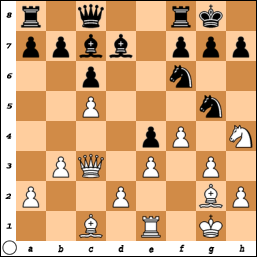
Your move. -
The End of Woke"left-wing terrorist networks" that the government has claimed [...] orchestrated Kirk's murder — Mijin
When was that? :brow: -
From morality to equalityMy understanding is that it is point-blank not accessible. — AmadeusD
Thank you for the video. I plan to watch it when I get the chance.
My question would be: How do we know it even exists, then? Specifically if, presumably it cannot ever be made conscious, doesn't that mean it can't ever be observed or proven to exist?
The point of the silly example was to ask the further question: If the unconscious is real, how do we know something deeper doesn't exist? And then something even deeper than that? How do we know there aren't layers beyond the layer we assume to be the deepest if nothing other than the conscious and pre-conscious can ever be detected or otherwise observed? -
Friendly Game of Chess
I'll regret this in the morning, no doubt. (so in about an hour)
Let's hope that knight of yours isn't as blind as he is fearless.
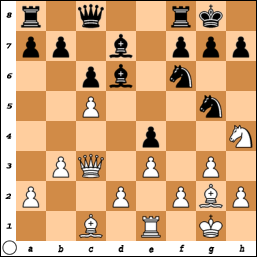
Your move. -
The End of WokeIt’s just, me and Jeremy and many others on this thread seem to be able to identify what woke means, what is woke, and what isn’t. And the woke people on the thread won’t talk about it, and say they don’t know what woke means. — Fire Ologist
So, while we're at it. Don't mind me just popping in here to say hello. :smile:
What is "woke" really? :chin: -
From morality to equalityThe subconscious cannot be made conscious — AmadeusD
It cannot, therefore ever, perhaps at least once (or even reliably and constantly), be triggered by a static and consistent means?
So, Pavlov's theory is just generational mass hysteria, then? No, of course not.
Point being, it can reliably be "drawn out" to the point it becomes clear as day to another observer, if that observer is tact enough. And if that is true, which it is, it means one can clearly, with discernment and skill, draw it out one's self. How could it not?
Otherwise, why even suggest it even exists in the first place? Why not say there's a "superconscious" that's just a giant dinosaur rampaging through the streets of New York that one can never interact with inside the mind of each and every one of us, while we're at it.
It was defined and coined for a reason, that reason being because it is in fact detectable, and so can in fact be made conscious. Perhaps it's difficult. Impossible by one's self. But that's no rhyme or reason to call a thing imperceptible. -
Hate speech - a rhetorical pickaxeMy son is 8 and extremely feminine — AmadeusD
How's that? Is he smaller than others? Daintier? That means nothing, that's size-ism. Just because a person is born larger and another person is born smaller doesn't mean the larger person is a better person.
Does he talk with a lighter voice? That also means nothing, that's hormone-ism. Just because a person is born with a hormone or pituitary gland imbalance, doesn't mean they're a better person.
Is he more "whimsical", enjoying things like frolicking through the flowers and uh, just being a kid? Yeah. That's called just being a kid. Just because a person likes to express themself without caring what others think, doesn't mean they're a better person.
Can't you see those who think otherwise are slaves? Sure, there's more of them. And they're larger and stupider, therefore more violent. But does that really matter?
Just because some hypothetical other kid is larger. stronger, and what not, essentially a dull, basic rock-like form of existence that has no passion or intelligence or sense of joy, that will go through life pretending they do, doesn't mean you can compare that unfortunate being as "masculine" and another more spirited child as "feminine."
It just makes no sense. It's anti-human, really.
If you think he's too "whimsical", teach him discipline through physical work. Hard work. Like mowing the lawn or harvesting a field. He should be sore and sweaty after. I'd wager, he's just thin and so moves "daintily" compared to other children. That's a purely skeletal and locomotive trait. Nothing to do with gender, hormones, or sexuality. Thinner people need less testosterone because they have less muscle tone and require less energy to move about. Making sense yet? Perhaps he likes bright colors and ponies and whatnot. That doesn't mean anything but what you allow society to dictate it as. All that means is he has more intelligence to appreciate art and culture. Getting through to you now?
That has nothing to do with sexuality.
He is acutely aware of how this will follow him through life. — AmadeusD
95% of cases, it's 100% about size. Miserable people have the most kids, they're the lions share of humans alive on this rock. That means, they are raised by terrible people and have no guidance, they see their parents flaws, who in turn irrationally act out (they are also mentally ill, yes, most people alive are mentally ill by all legitimate, medical standard) are fully aware, and so take it out on the world around them. So they will bully smaller "happier" children. Now, if your kid was larger, they wouldn't dare. See what's going on here? The "strong" (mentally weak, or raised by the mentally weak) pick on the "weak" (physically smaller) because it's the only thing they can do to feel adequate being raised by mentally-weak subhumans who don't know how to raise children and should have no business having any.
Stuff like this is why I'm a staunch monarchist and royalist. Those Made to be subject to a Lord rebelled, killed those Made to be their appointed leaders, (I won't even get into the Biblical repercussions they'll face eternally), and that's the world we live in. For now. All I'm saying is, don't let this silly world be your kids mother and father. That's supposed to be your job. -
Hate speech - a rhetorical pickaxeA straight white boy experiencing bullying will experience plenty of negative feelings. — Jeremy Murray
Does a boy really know what sexuality is? What straight is? What race or being "white" is? They do not.
They know colors. Which have no meaning other than the visual perception they experience. Growing up, me and an African American boy would play hide and seek. Once or twice we would joke "Hey, that's no fair! It's getting dark, (boy's name here) is gonna hide and we'll never be able to find him!" And we all laughed and joked, equally. Sure, I suppose in hindsight that was "racist" but, not really, because we had no deeper meaning of the term. It didn't mean anything. So we all laughed together. Sure, it's not that way as an adult. No, not by far. But my point is, kids don't process any deeper meaning behind the words beyond what the words suggest. -
Reading group: Negative Dialectics by Theodor AdornoWhy would you think that this implies that consciousness is not real? — Metaphysician Undercover
Because the human experience cannot exist without consciousness. What is the human experience without emotion and mental response to one's environment via one's senses by means of consciousness (be it positive like pleasure or negative like pain).
I stake it or claim that, yes, if a being cannot ever experience suffering, it cannot ever experience pleasure, if it cannot experience emotion, it is not conscious per largely established and widely-agreed upon definition. So one cannot simply act like the legs that form a chair do not exist, or otherwise have no meaning, and still talk about the thing as if were a chair.
Outlander

Start FollowingSend a Message
- Other sites we like
- Social media
- Terms of Service
- Sign In
- Created with PlushForums
- © 2025 The Philosophy Forum


